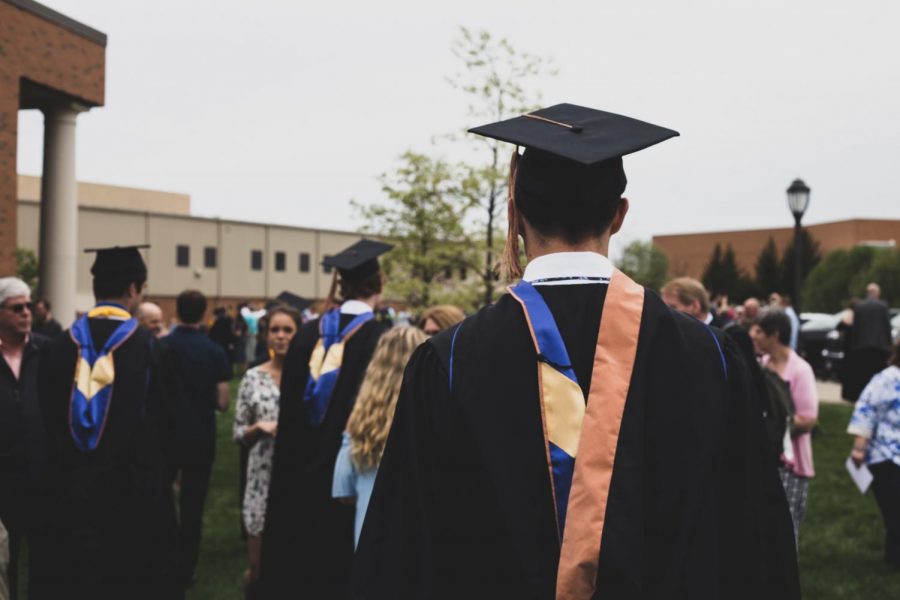It was only the second week of March and wafting through the air above Cerritos College was a concoction of uncertainty and relief.
As students, staff and faculty wrapped up their assignments and left campus to begin the Spring recess, the World Health Organization declared the Coronavirus outbreak a global pandemic.
The events of last year already feel like some distant memory. Schools and businesses started to close their doors indefinitely, some of which would never open again. It was Friday the 13th when Cerritos College announced that it, along with most other California colleges, would transition to online instruction. That day, millions of American students began a Spring recess that would take them off campus for almost two years.
“My professor warned us that we were going to be out for at least two weeks and I was sort of in denial thinking that there was no way we would experience that,” said Anissa Morales, business major at Rio Hondo College.
“Fast forward to now and I’m laughing at myself.”
Students did oral presentations, lab courses, group projects and graduations all from their kitchen table. The Zoom application became a household name seemingly overnight. Some students were allowed to continue working, but it all depended on how the workplace could function and if the state’s government allowed it.
The pandemic put the United States through the wringer with a death count well above 586,000 and an election that almost tore the fabric of the nation.
Unemployment soared to new heights in record breaking time and students around the world were forced to converge whatever space they had into a home office.
That chapter however is nearing its end, with manageable hospitalization rates and more people getting vaccinated.
On May 13, the CDC announced that fully vaccinated individuals do not have to social distance and can remove their masks while indoors (unless in crowds). It is a return to normalcy that the nation has been yearning for through this difficult time.
Community colleges have the reputation of teaching a wide variety of students, with a vast range in age and responsibilities. Some balance busy school schedules on top of full time jobs. Some students studied from home to raise their children. Almost all have their sights set on transferring to a four year college.
After an unprecedented year of challenges, students are finally walking towards the light at the end of the tunnel, bringing with them crucial life lessons that they will likely carry for the rest of their lives. Before returning to campus once again, students reflect on these lessons and the tribulations that instilled them.
“I missed being able to see my grandparents whenever I want or go grab a coffee with friends or celebrate Thanksgiving with my entire family,” said Morales, “I think I’ll cherish the small things one-thousand times more now.”
Elizabeth Del Rio, an architecture major at Mt. San Antonio College, said she used time spent at home to reflect on the flaws in the now exposed American education system.
“We are taught our whole lives to pursue a secondary education and once we finally graduate high school all of sudden we must maintain fiscal responsibility to pay for our [tuition], textbooks or materials, find transportation and all the while we must balance our GPA, mental health, physiological health and emotional well-being,” she said.
Cerritos College, along with other institutions, is planning to continue online learning in the summer and then begin hosting 50% in-person instruction in the fall 2021 semester.
“Going into my first year at Cerritos College as a student athlete was definitely interesting and challenging,” said Isabella Berdote, “because all I know about Cerritos College is just from my computer screen. Lots of remote learning came with uncertainty especially whether or not I would be back in the pool practicing.”
While Berdote is “ecstatic” to resume in person learning in the fall, she said if this experience has taught her anything, it’s patience.
“To go from being a full time student athlete to being cooped up in my room everyday, it taught me to not only be patient, but wait with confidence and positivity,” she said.
Student and ASCC senator Jose Alberto Hernandez said he learned that you don’t need to be on campus to impact students and make your college a better place.
“There’s a lot on campus, there’s always a possibility of being involved and anything is possible if you really want it,” he said.
Cerritos College’s return to campus plan is a gradual start, first the campus wants to open at 50% capacity, which they later clarified means working toward 50% of classes on ground and in hybrid formats. Classrooms sizes will cap at half capacity and faculty have some flexibility to work on campus or online according to the college.
The results of a series of surveys conducted by the school via email shows that the majority of professors and students wish to return to campus in some way by the Fall.
















